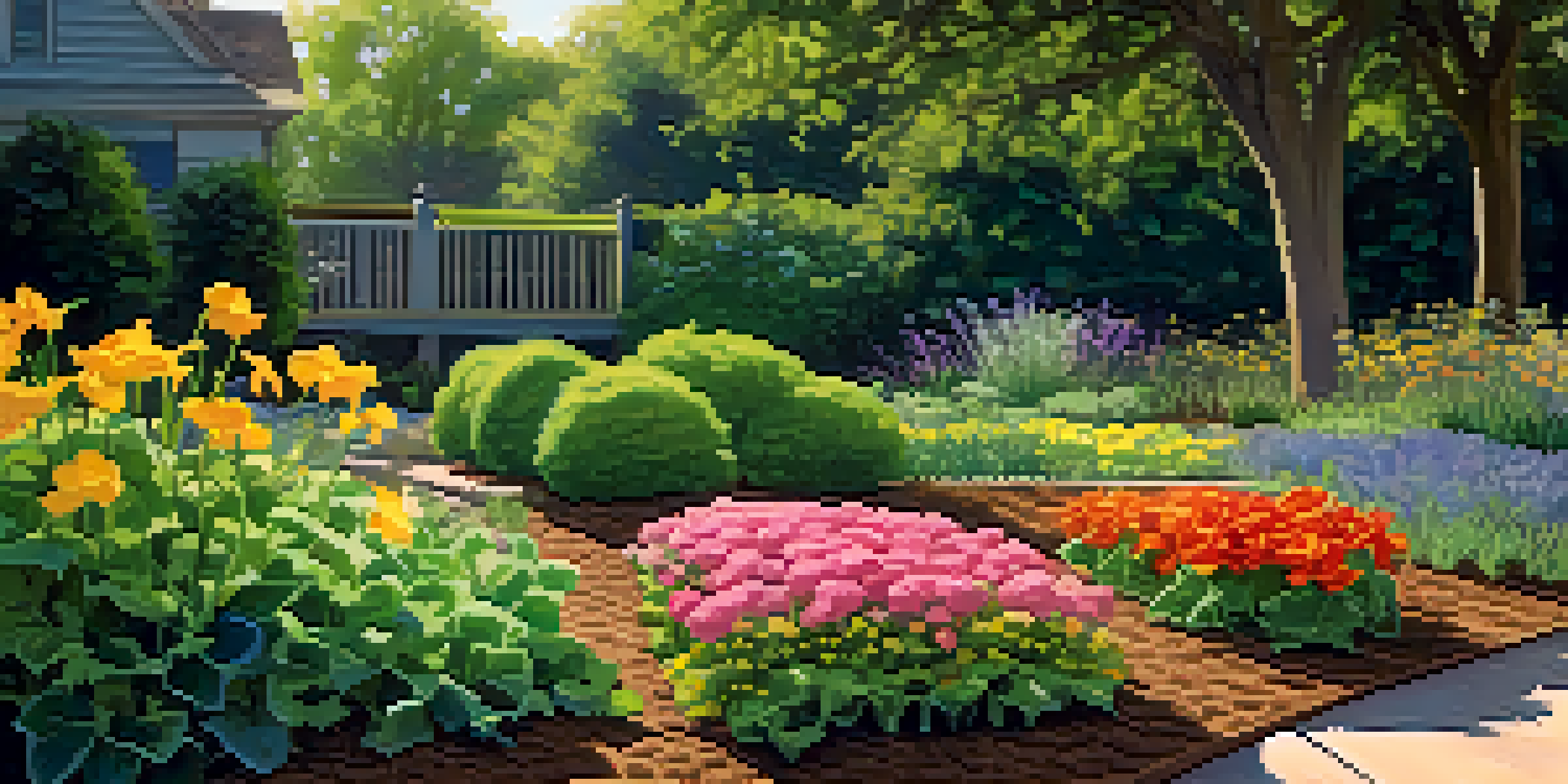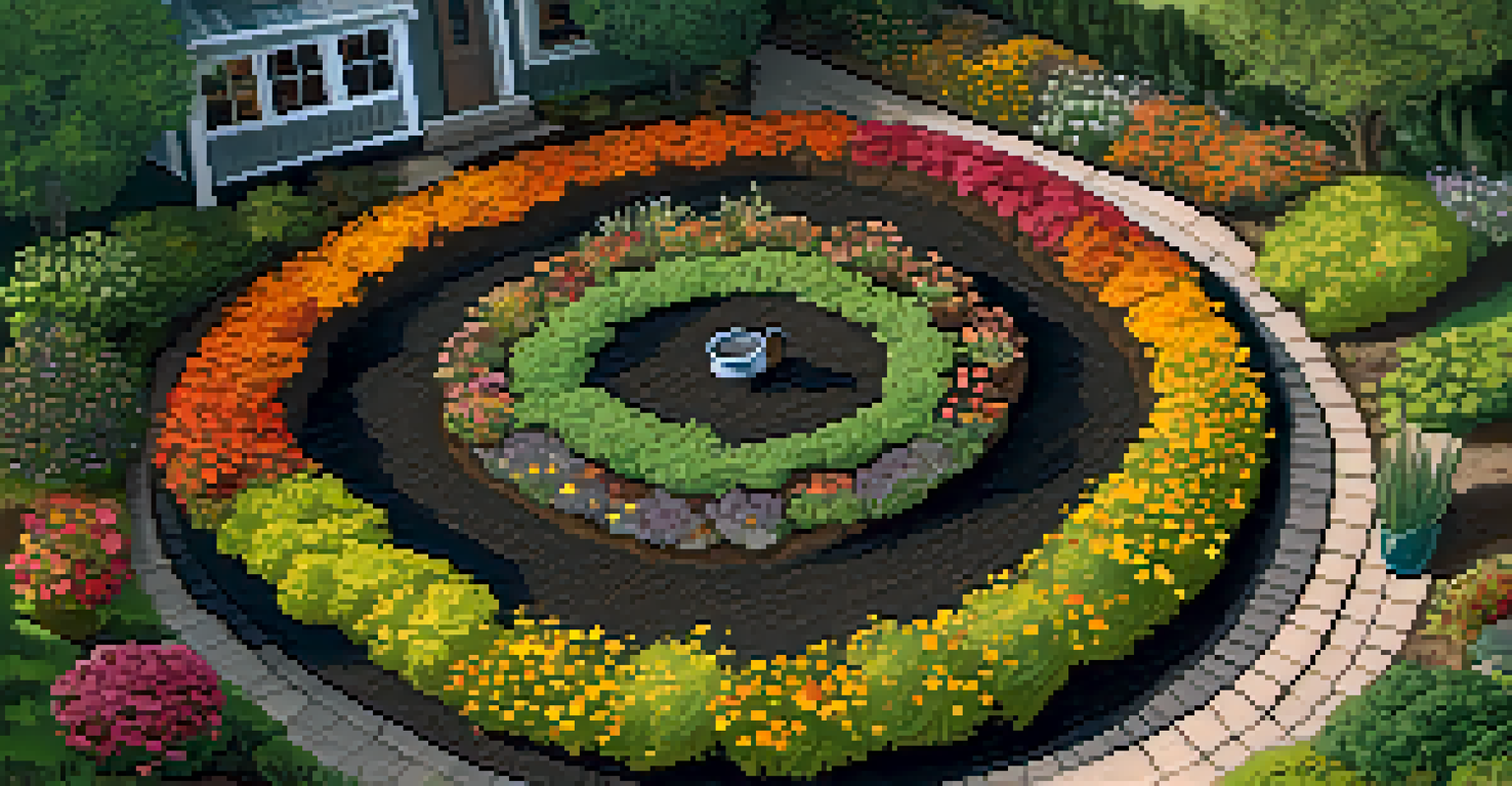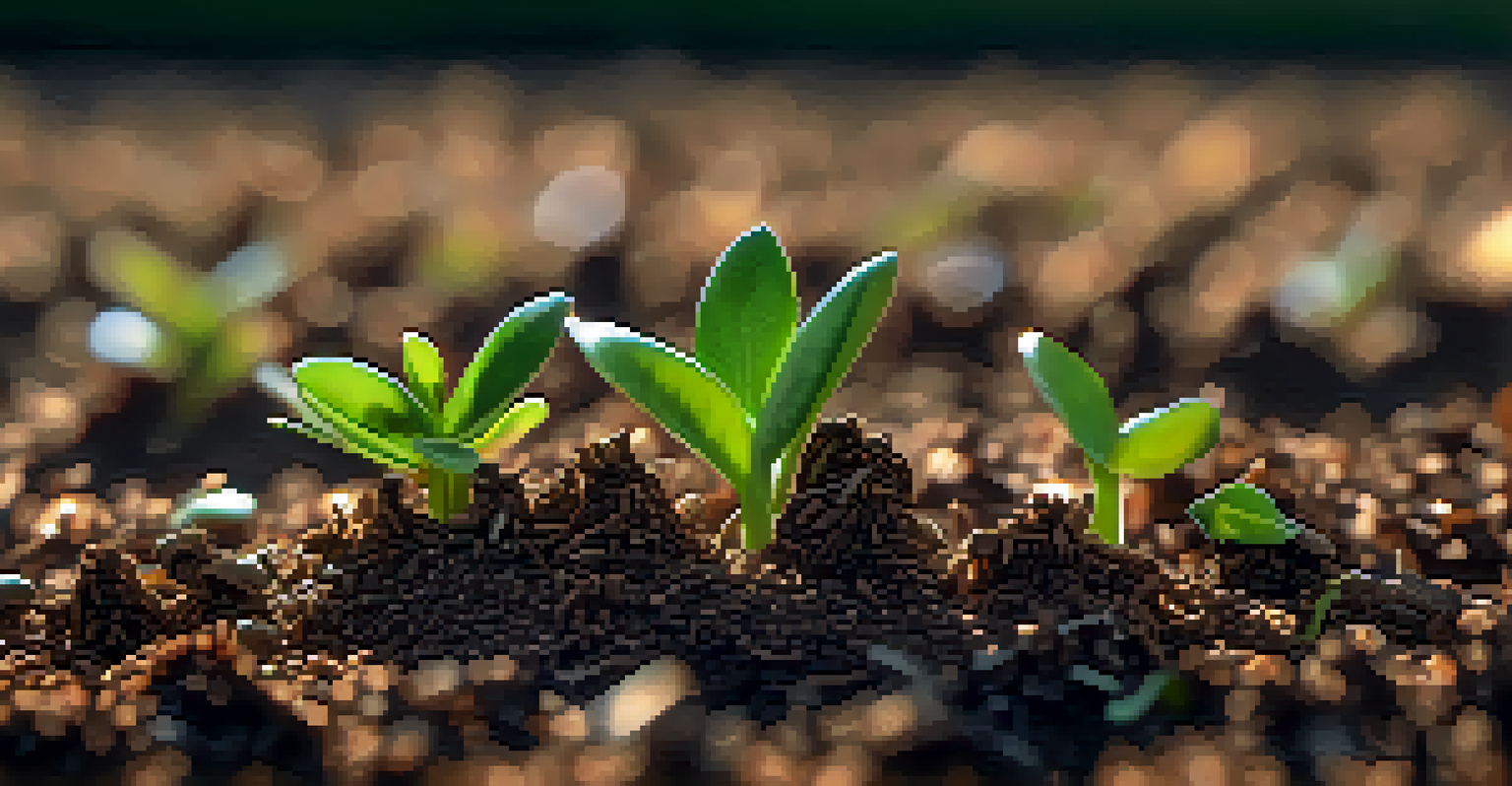The Role of Mulching in Sustainable Garden Practices

What is Mulching and Why is it Important?
Mulching involves covering the soil with a layer of material, such as wood chips, straw, or leaves. This practice is vital for maintaining soil moisture and regulating temperature, both of which are essential for plant health. By creating a protective barrier, mulching can also prevent weed growth, making gardening easier and more efficient.
Gardening is the purest of human pleasures.
Additionally, mulching contributes to soil health by breaking down organic materials over time. This process adds nutrients back into the soil, fostering a vibrant ecosystem for beneficial organisms like earthworms. Healthy soil is the foundation of a sustainable garden, and mulching plays a pivotal role in achieving that.
Moreover, mulching helps in reducing erosion by stabilizing the soil. Heavy rains can wash away topsoil, but a good mulch layer keeps it intact, promoting a thriving garden environment. Thus, mulching is not just a decorative choice; it’s an effective strategy for sustainable gardening.
Types of Mulch: Organic vs. Inorganic
Mulch comes in two main types: organic and inorganic. Organic mulches, such as shredded bark, grass clippings, and leaves, decompose over time, enriching the soil. They also improve soil structure and provide habitats for beneficial microorganisms, making them a popular choice among sustainable gardeners.

On the other hand, inorganic mulches, like gravel or black plastic, do not break down and need to be replaced less frequently. While they can effectively suppress weeds and retain moisture, they do not contribute any nutrients to the soil. Thus, choosing the right type of mulch depends on your gardening goals and environmental considerations.
Mulching Enhances Soil Health
Mulching enriches the soil with nutrients as organic materials decompose, supporting a vibrant ecosystem for plants.
In many cases, a combination of both organic and inorganic mulches can be beneficial. For example, using organic mulch on top of a layer of landscape fabric can provide the best of both worlds—nutrient addition and weed suppression. This versatility allows gardeners to tailor their mulching strategies to their specific needs.
How Mulching Affects Soil Moisture Retention
One of the most significant benefits of mulching is its ability to retain soil moisture. When applied correctly, mulch acts as a barrier against evaporation, keeping the soil beneath hydrated for longer periods. This is especially important during dry spells or in regions with limited rainfall, where every drop counts.
The best time to plant a tree was twenty years ago. The second best time is now.
For instance, a garden bed covered with a thick layer of straw mulch can significantly reduce the amount of water needed for irrigation. This not only conserves water but also encourages deeper root growth in plants, making them more resilient to drought conditions. In sustainable gardening, this aspect of mulching aligns perfectly with water conservation efforts.
Furthermore, mulching helps to maintain a consistent soil temperature, which can also contribute to better moisture retention. Cooler soil temperatures in summer prevent excessive evaporation, while warmer temperatures in winter protect plant roots from freezing. This temperature regulation is crucial for healthy plant development throughout the seasons.
Weed Control: A Natural Solution
Weeds can be a gardener's worst nightmare, competing with your plants for nutrients, water, and sunlight. Mulching offers a natural and effective solution to this problem by creating a physical barrier that blocks sunlight from reaching weed seeds. Without light, most weed seeds cannot germinate, which significantly reduces their growth.
For example, applying a thick layer of wood chips around your vegetable plants can greatly diminish the number of weeds that sprout. This not only saves you time and effort in weeding but also reduces the need for chemical herbicides, making your gardening practices more sustainable. The result is a healthier garden ecosystem that supports plant growth without harmful chemicals.
Effective Weed and Pest Control
By blocking sunlight and attracting beneficial insects, mulching naturally suppresses weeds and helps manage pests.
Additionally, some organic mulches, like straw or grass clippings, can further suppress weed growth as they break down over time. As they decompose, they not only nourish the soil but also create a habitat for beneficial insects that can help control pests naturally. This symbiotic relationship enhances the overall health of your garden.
Improving Soil Quality with Mulching
Mulching not only conserves moisture and suppresses weeds but also improves soil quality. As organic mulches decompose, they release essential nutrients back into the soil, which plants need for healthy growth. This nutrient-rich layer can enhance soil fertility and promote robust plant development.
For instance, using compost as mulch not only feeds the plants but also increases microbial activity in the soil. This activity is crucial for breaking down organic matter and making nutrients available to plants. A thriving microbial community indicates a healthy soil ecosystem, which is vital for sustainable gardening practices.
Moreover, mulching can enhance soil structure by preventing compaction and promoting aeration. Healthy soil structure allows roots to penetrate more easily, improving water and nutrient absorption. This interconnected relationship between mulching and soil quality is what makes it such a valuable practice for gardeners aiming for sustainability.
Pest Control: How Mulching Helps
While mulching offers many benefits, it can also play a role in pest control. Certain types of mulch can deter pests by creating an unfavorable habitat for them. For instance, using cedar mulch can repel certain insects due to its natural oils, providing an added layer of protection for your plants.
Additionally, a thick layer of organic mulch can attract beneficial insects, such as ladybugs and lacewings, which prey on harmful pests. By fostering a balanced ecosystem, mulching helps maintain the natural predator-prey relationship in your garden. This approach minimizes the need for chemical pesticides, aligning with sustainable gardening practices.
Conserves Water and Regulates Temp
Mulching retains soil moisture and stabilizes temperature, which is crucial for plant health, especially in dry conditions.
It's important to choose the right type of mulch based on the specific pests you're targeting. Some gardeners may prefer to use mulch that hosts beneficial nematodes, which can help control soil-borne pests. By integrating mulching into your pest management strategy, you create a healthier and more sustainable garden environment.
The Environmental Impact of Mulching
Mulching contributes significantly to environmental sustainability in gardening. By using organic materials like leaves or grass clippings, you recycle waste that would otherwise end up in landfills. This practice not only reduces waste but also promotes a circular economy in your gardening efforts.
Furthermore, mulching helps in conserving biodiversity by creating habitats for various organisms. A healthy garden is one where insects, birds, and plants coexist, and mulching fosters this diversity. This balance is crucial for ecosystem health and resilience, making mulching an essential aspect of sustainable gardening.

Lastly, by improving soil quality and reducing the need for chemical inputs, mulching supports sustainable agriculture practices. Healthier soils sequester more carbon, contributing to climate change mitigation efforts. Thus, the environmental benefits of mulching extend far beyond the garden, making it a vital practice for eco-conscious gardeners.